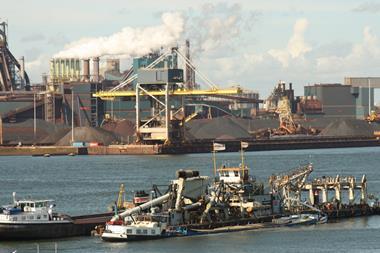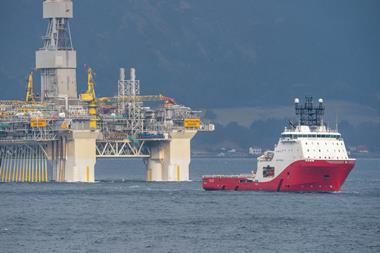S&P Dow Jones Indices has launched the world’s first ‘1.5°C carbon budget benchmarks’ based on absolute emissions, in response to calls from the $130trn Glasgow Financial Alliance for Net Zero (GFANZ).
The index provider claims the five new products will enable investors to decarbonise their portfolios in line with the Intergovernmental Panel on Climate Change’s forecasts, which set a global carbon budget of 300gt between 2021 and 2050 if the world is to remain below 1.5°C of warming.
GFANZ is the umbrella organisation for the numerous initiatives coordinating financial markets’ efforts to reach net zero by 2050. Today, it closes a public consultation on a proposal for the construction of indices that would help its hundreds of investor members align their portfolios with net zero.
“Since large pension funds are predominantly passive investors that control about half of capital markets, net-zero benchmark construction approaches, in addition to bottom-up portfolio alignment methods, are important,” it said in the proposal.
“In this context, a benchmark aligned with a carbon budget for limiting warming to 1.5°C might be useful to help shift capital to the net-zero economy.”
It called for indices that recalculate what’s left of the global carbon budget annually, reweighting the index accordingly based on “the prevailing corporate emissions each year”.
In response, S&P – which was on the working group that helped develop those proposals – has launched five indices covering developed and emerging markets, all based on mainstream parent indices.
The index provider has calculated the need for an average 10% reduction in absolute emissions each year starting from 2022 if a portfolio is to stay within the IPCC’s 2050 carbon budget. Each year, S&P will calculate how much of that budget is actually left, and then revise the decarbonisation target accordingly.
“We wanted to put forward an index series that is explicitly designed to meet the goals of the Paris Agreement without any other considerations or ESG overlays,” said Richard Mattison, president of S&P subsidiary, Sustainable1. “These are designed to mirror the IPCC’s absolute carbon budget, which will reduce over time.”
He added: “If you’re a big investor with a GFANZ commitment, you should probably be heading towards roughly 50% [carbon emissions] reduction by 2030. But if you do that on a relative basis it won’t necessarily put the world on a net zero trajectory, so it should probably be on an absolute basis. But a lot of investors aren’t comfortable with that.”
This new approach to low-carbon index construction stands to rival the popular Paris Aligned Benchmark (PAB) methodology created by the EU and its advisors.
That approach, which has been adopted by asset owners including AP2 in Sweden and Brunel Pension Partnership in the UK, differs in a number of ways. Crucially, PABs use relative emissions – or emissions intensity – rather than absolute emissions, and have a consistent 7% annual decarbonisation target rather than one that ratchets up depending on the remaining carbon budget.
The carbon budget suite has a tracking error of below 30bp at launch. “But over time, the tracking error will increase,” said Mattison, predicting growth to 200bp by 2035.
“We have to face facts: you can’t achieve pretty much zero tracking error forever and still become net zero, on the basis of the current trajectory. We know the world is in deviation [from climate goals] so surely the capital markets must be in deviation. So if we face the fact that that’s true, tracking error does go up.”
The launch comes as a survey finds that less than a quarter of asset owners are happy with the current state of ESG indices. The study, published today, was conducted by ESG data firm GaiaLens and research house Beresford.
It asked chief investment officers, sustainability heads and heads of ESG integration at 200 asset owners across Western Europe and the US for their views on ESG data, benchmarks and reporting.
Just 23% of respondents said they were happy with current index offerings, although this figure rose to 29% in Western Europe. 28% said that methodologies were either unclear or not robust, while around 15% claimed investments tracking the indices didn’t perform well enough.
Read the digital edition of IPE’s latest magazine




































No comments yet